Case Study: John Lewis
Tokens for Theming
Introduction
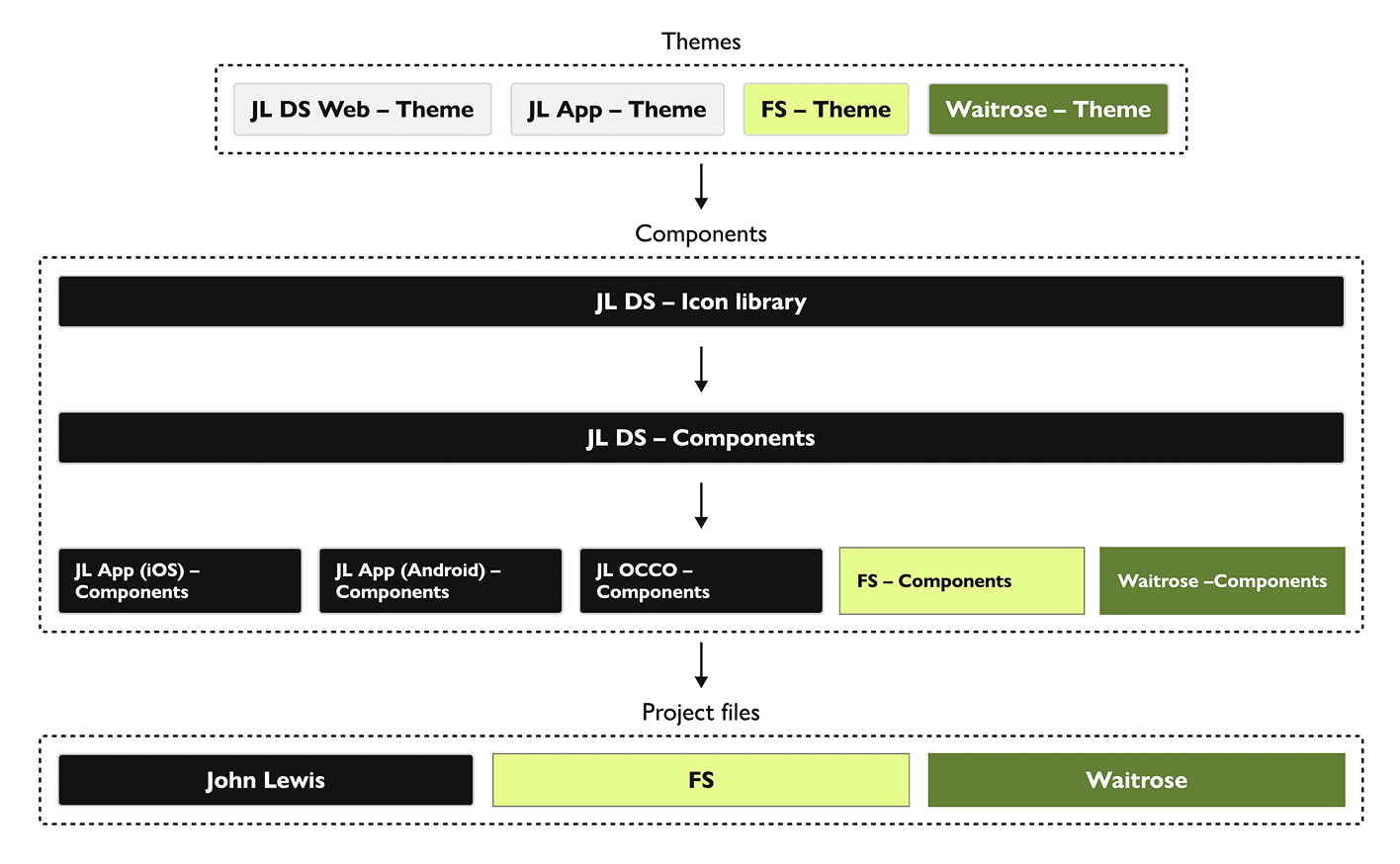
Introduction
Evolving the John Lewis Design System to be Brand Agnostic.
Challenge 1
Why Change Was Needed
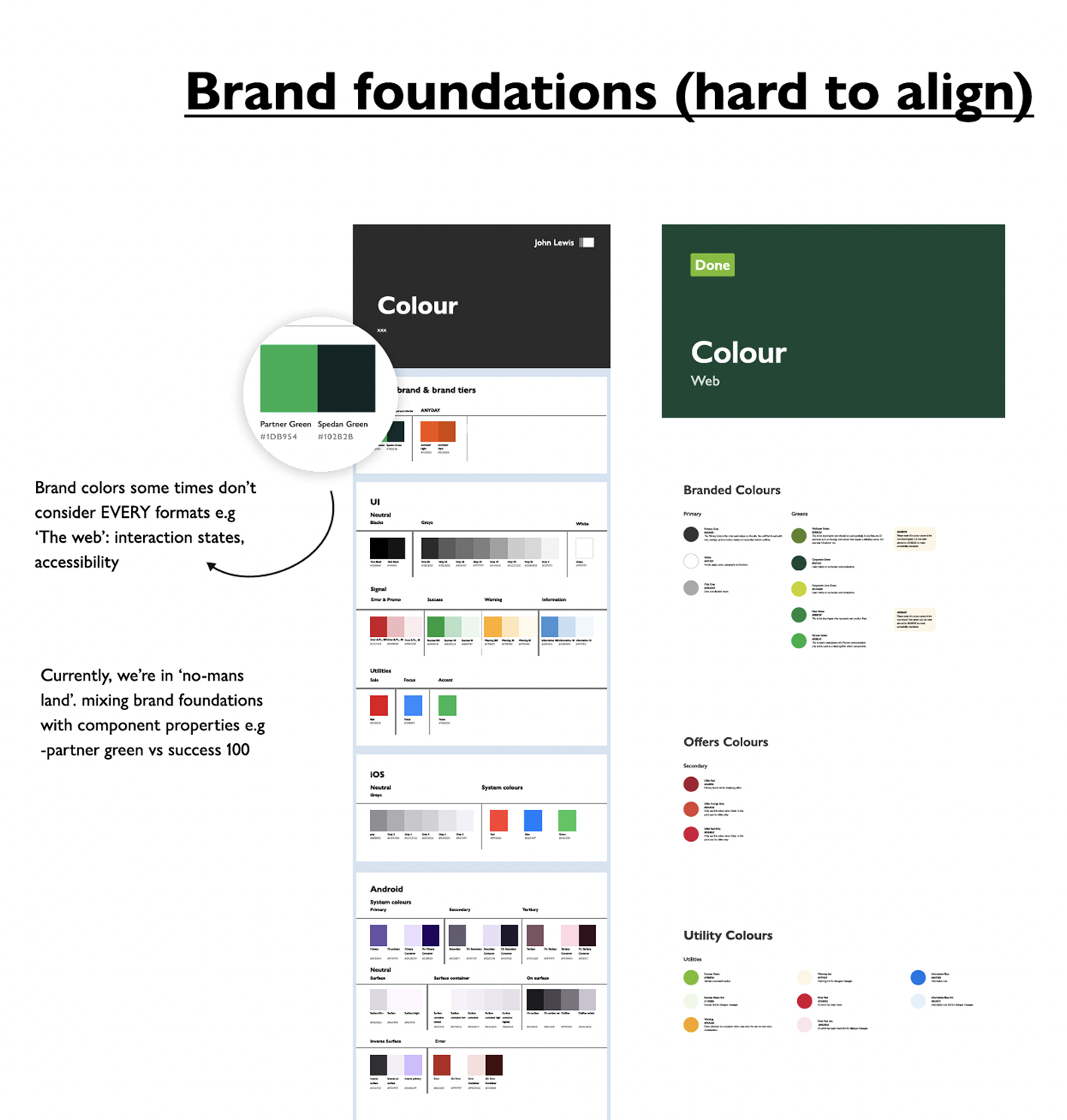
Challenge 1
Why Change Was Needed
A rebrand exposed the limits of our existing design system
As we prepared for a major brand refresh, it became clear that the system wasn’t flexible enough to handle theming, accessibility, or future brand needs. We needed a more robust, scalable foundation.
- Deadlines were fixed around the Joyfully Bold rebrand
- The system couldn’t support theming or dark mode
- Multiple brands (Waitrose, JL Money) would need shared foundations, with JL Money being the priority with a new team in place relying on our guidance to deliver.
Challenge 2
Our Constraints
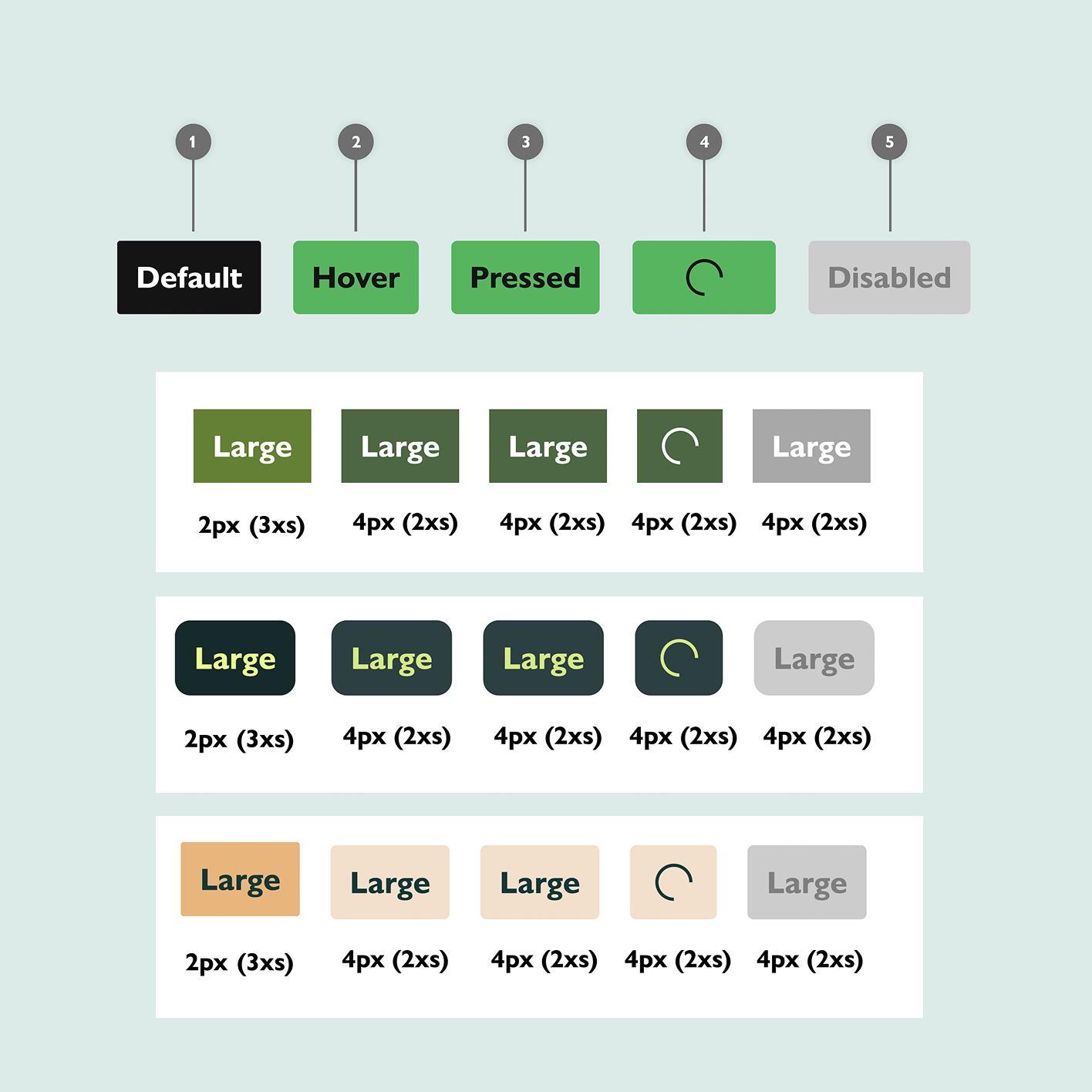
Challenge 2
Our Constraints
Independent teams, inconsistent structures, and technical debt
We inherited a system with no shared token structure, inconsistent colour usage, and hard-coded values across components. Teams were solving the same problems in different ways.
- No semantic or layered token architecture existed
- Multiple simultaneous NDA’d Projects to deliver, with independent timelines and dependencies
- Each business team had its own completely independent visual language
Transition 1
Setting a Clear Approach
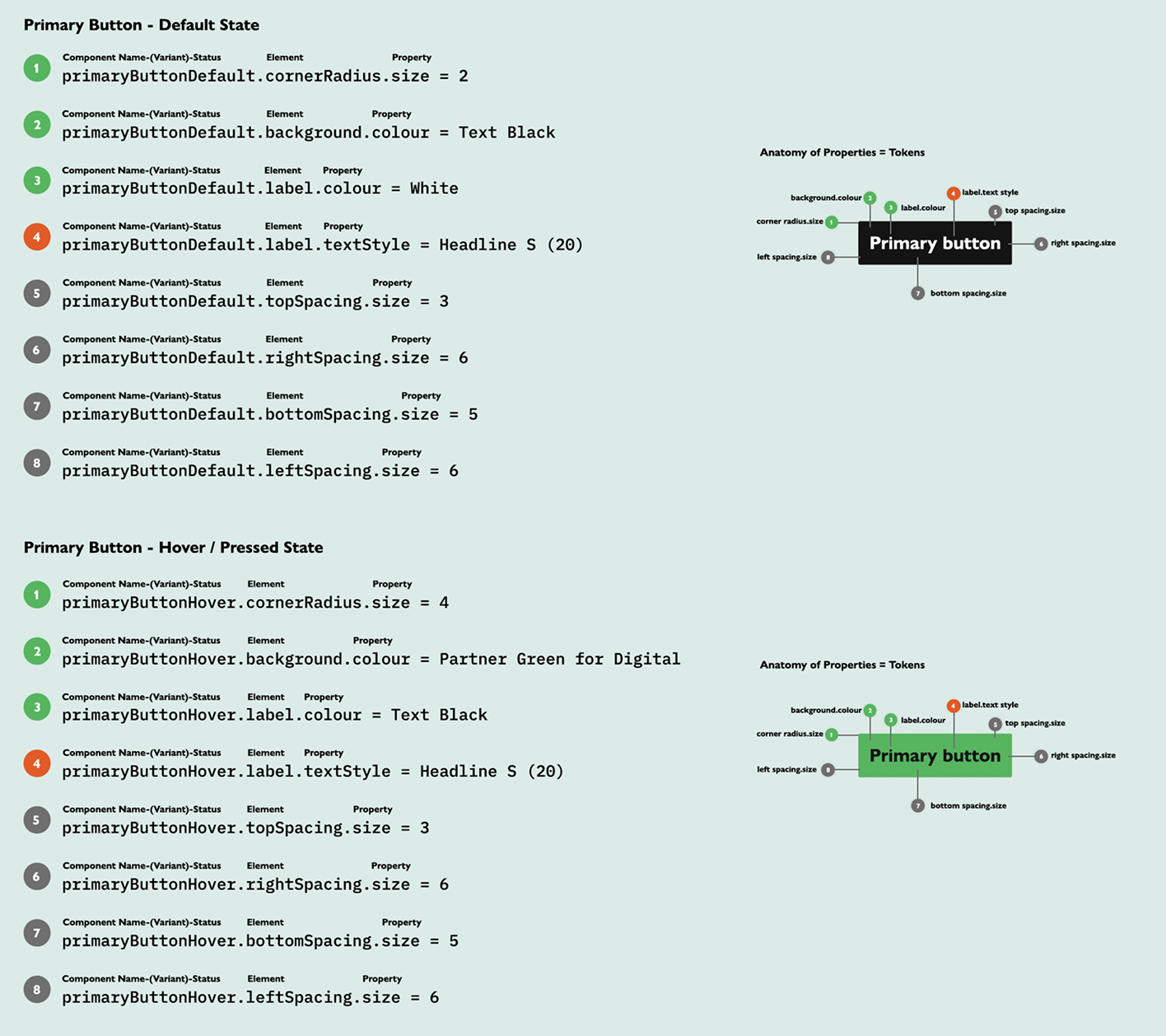
Transition 1
Setting a Clear Approach
Start small, build for scale
We knew we had to deliver meaningful progress fast without creating fragile systems. That meant focusing on colour first and building semantic flexibility from the start.
- Focused on high-impact areas like colour and interaction states
- Introduced semantic tokens to separate intent from value
- Prioritised clarity, accessibility, and developer adoption
Process Step 1
Building the Token Structure
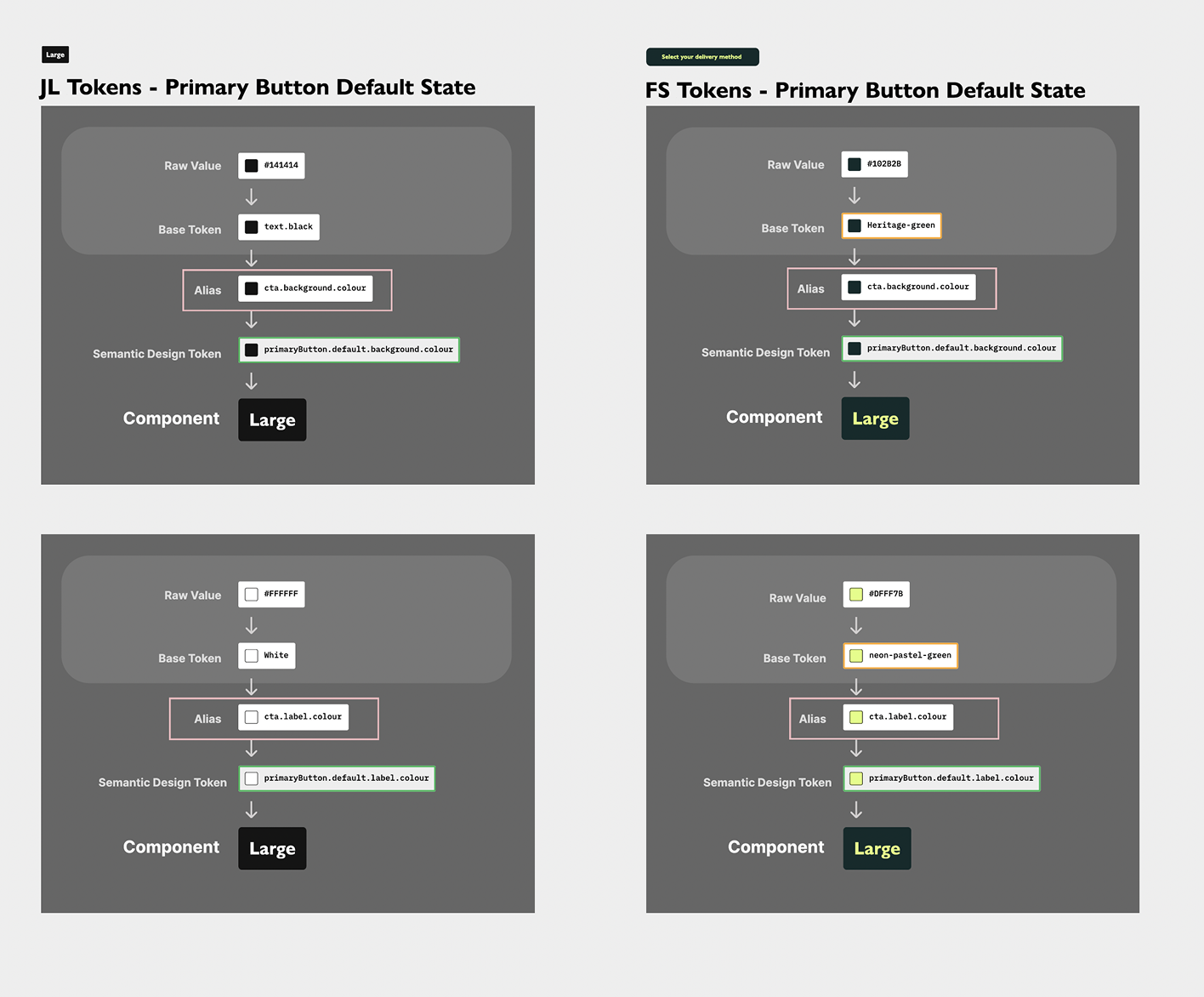
Process Step 1
Building the Token Structure
From fixed colours to a flexible semantic system
We introduced a layered token architecture: global values, semantic aliases, and component-level application. This gave us power to theme at scale without rewriting components.
- Created tokens for brand, interaction, feedback, surface, and text
- Introduced variables across design and code environments
- I initiated the tokenisation work and began aligning JL Money, Waitrose, and JL Partnership
Process Step 2
Making It Work in Practice
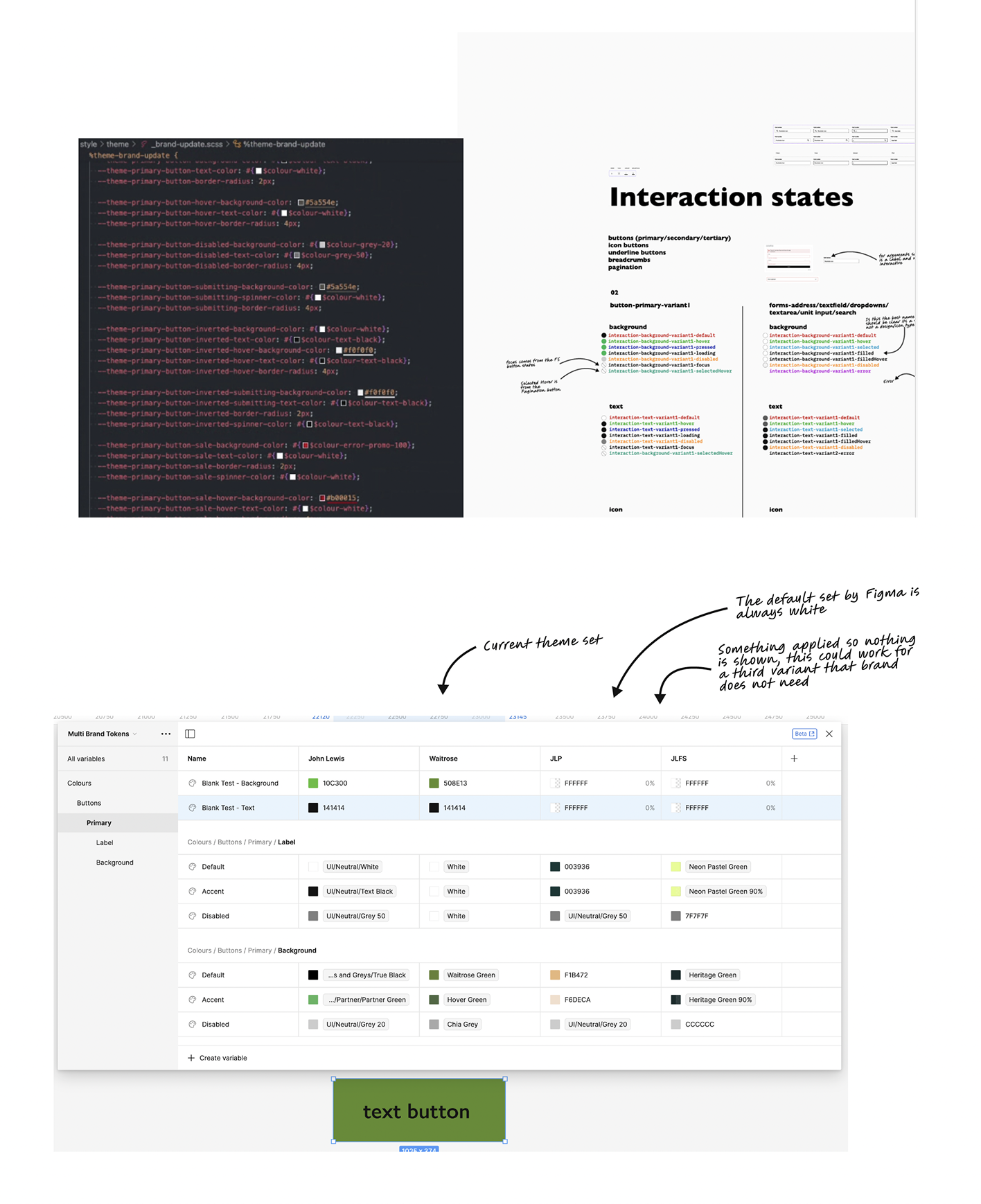
Process Step 2
Making It Work in Practice
Cross-functional collaboration was key to adoption
We worked closely with engineering to ensure each component was verified in Storybook. On the design side, we created a comprehensive system site with guidance, usage, and component anatomy.
- Designers and developers collaborated from day one
- Used Style Dictionary to ensure consistent output across platforms
- Built robust design documentation in Figma and online
Transition 2
From System to Solution
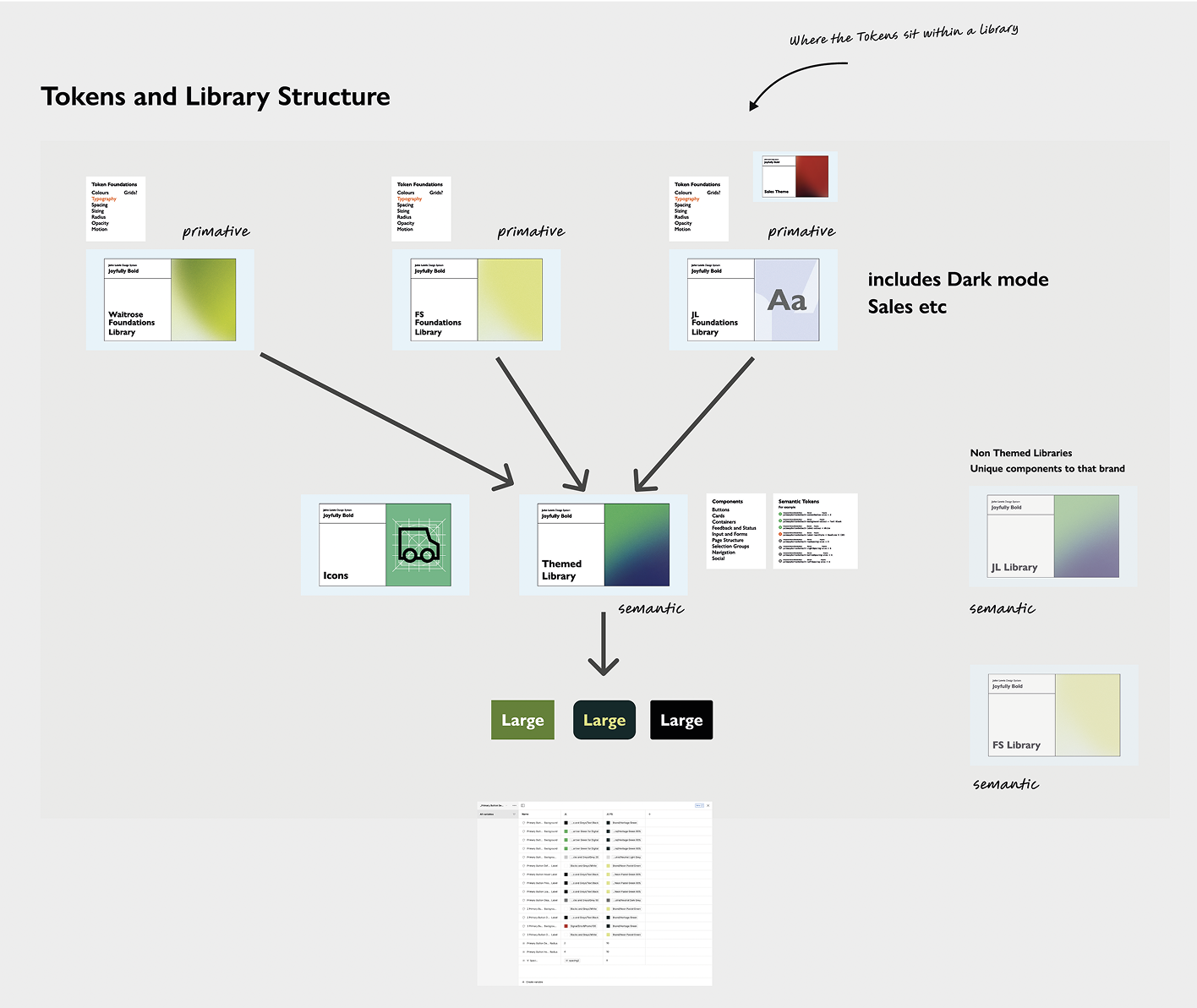
Transition 2
From System to Solution
Laying the foundation for multi-brand flexibility
With strong infrastructure in place, we expanded usage, embedded governance, and began enabling theming across the wider partnership.
- Focus shifted from core tokenisation to application at scale
- Governance and contribution models were defined
- We actively supported cross-brand rollout
Solution Step 1
What We Delivered
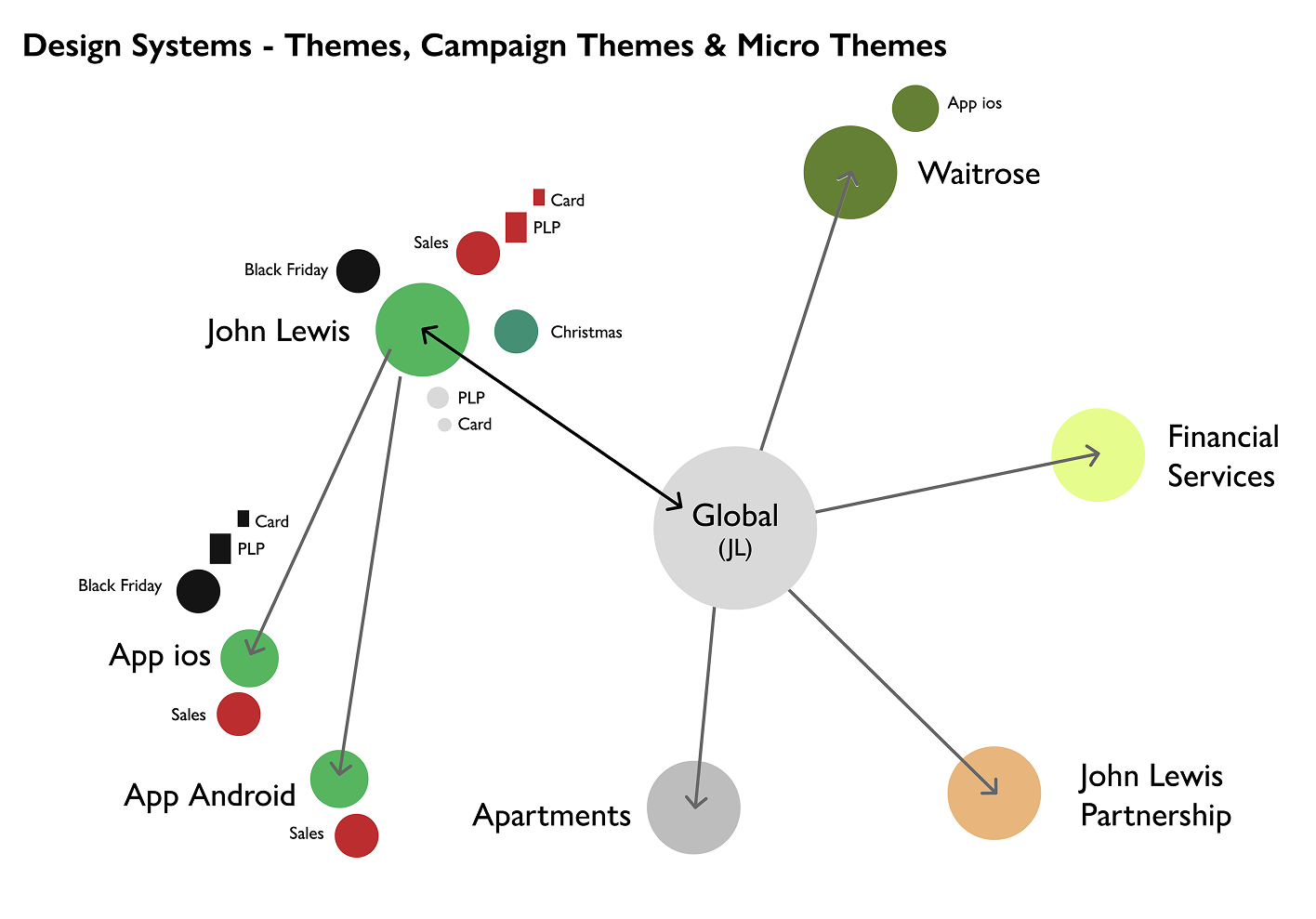
Solution Step 1
What We Delivered
Tokens that enable scalability, accessibility, and consistency
We delivered a semantic token system that can support multiple brands, theming contexts, and accessibility standards — with clear documentation for adoption.
- Tokens are centralised, semantic, and brand-ready
- The system enables theme switching without component rewrites
- Accessibility is embedded, not retrofitted
Solution Step 2
System-Wide Benefits
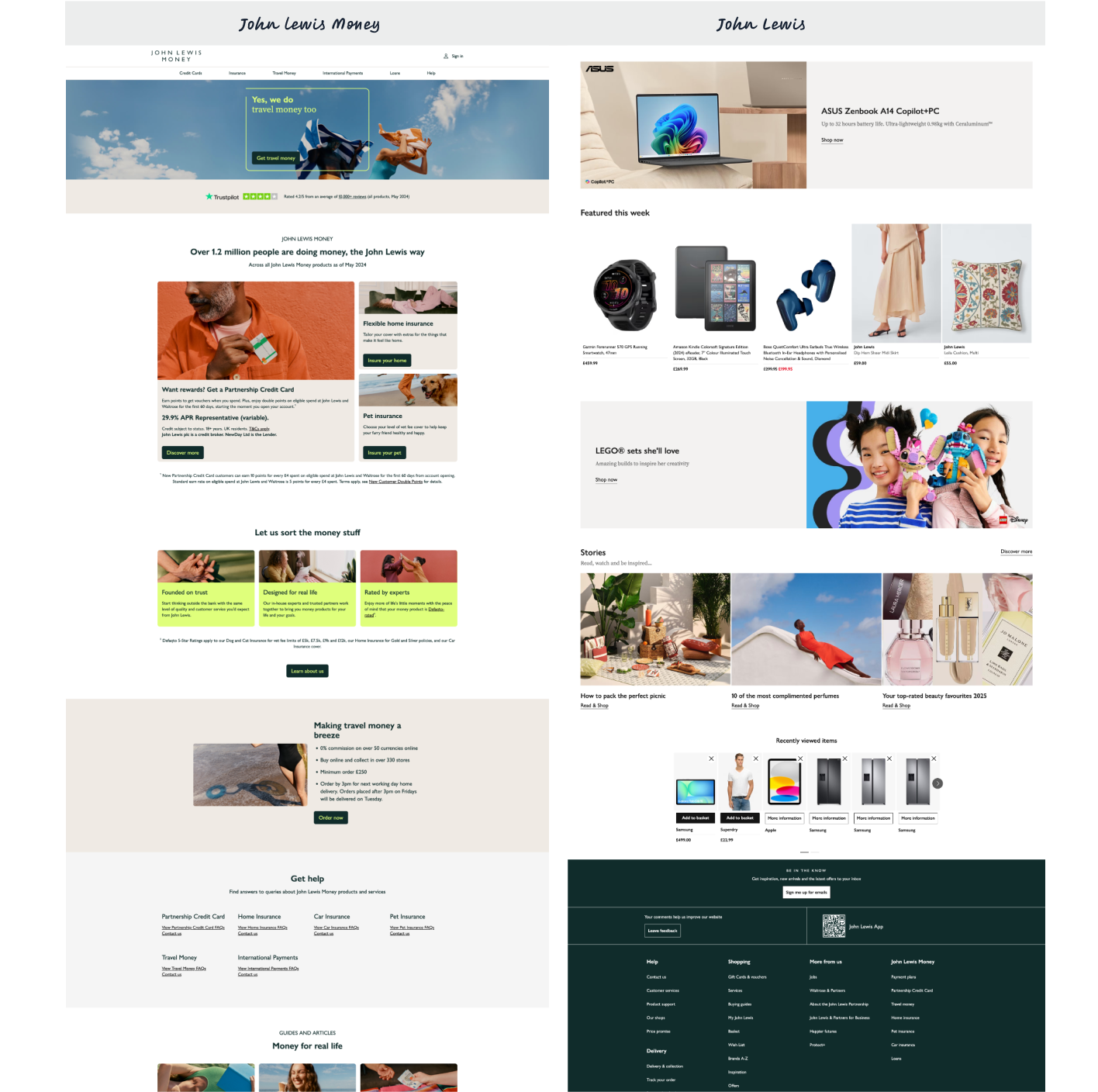
Solution Step 2
System-Wide Benefits
A scalable foundation across the JL Partnership
Our work enabled teams across John Lewis, Waitrose, and JL Money to build with shared standards. With strong governance, the system can now evolve cleanly.
- Token structure reduces tech debt and duplication
- Built for rebrand, dark mode, seasonal and campaign theming
- Foundation now used across key JL digital properties
Key Learning
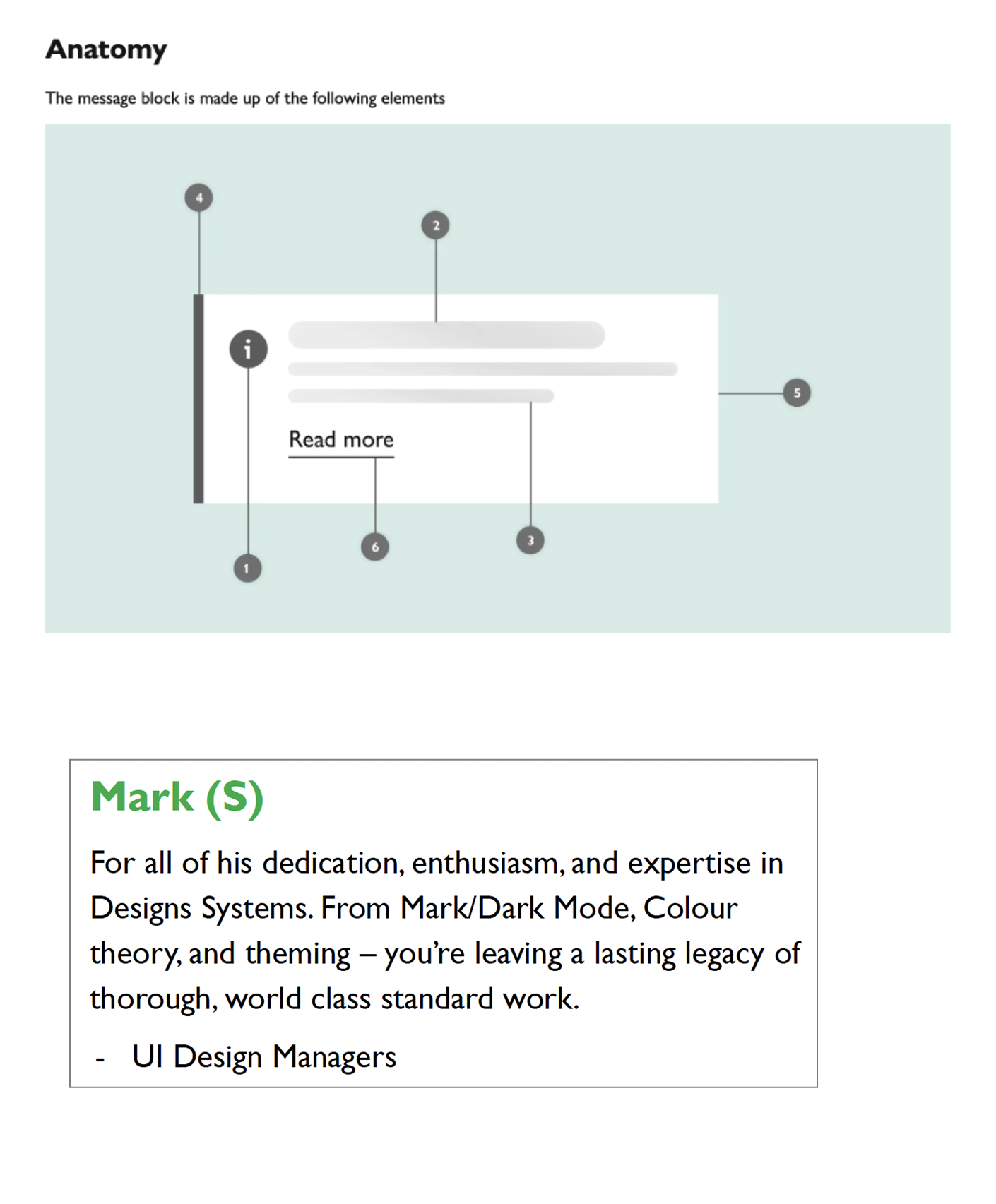
Key Learning
Understand the Anatomy of Components & semantic abstraction
- Start with tokens, not components: By creating a semantic layer before tweaking core components, we enabled theme switching and future‑ proofed the system from the outset
- Collaborate deeply between design and engineering: Working hand‑ in‑ hand (e.g. jointly verifying Storybook components, refining naming conventions) helped us align intention with implementation and resolve constraints early. Find that common language.
- Document and govern consistently: Building a dedicated design system website with guidance, anatomy, and governance rules enabled multiple teams to adopt and contribute safely and sustainably
- Embed accessibility into tokens from day one: Designing everything with WCAG contrast and inclusive requirements built broad potential into the system and avoided retrofitting challenges later
With many thanks to all the Design System Team: Mohamed Kherroubi, Sam Hoh, Lewis Jones, Katherine Lattaway, Bradley Nicholls, and James Ault
And in the wider business for essential insights into the other businesses’ Design Systems
Rob (JL Partnership), John (JL Money) & Dara (Waitrose)
For more info read:
Sam's Medium article